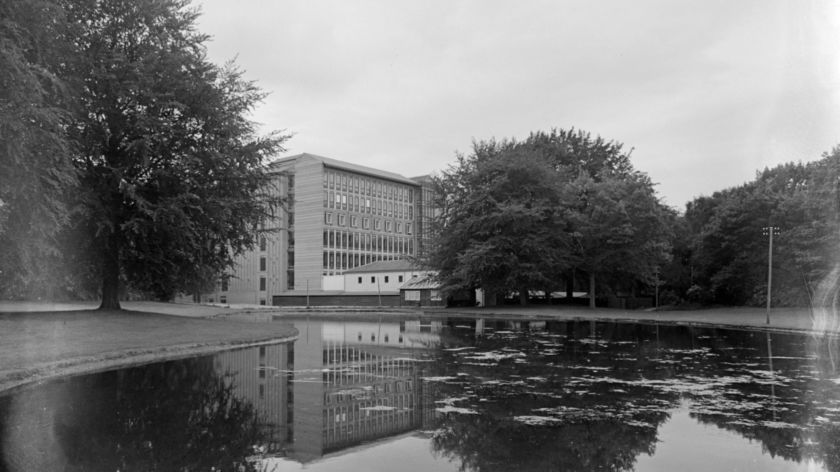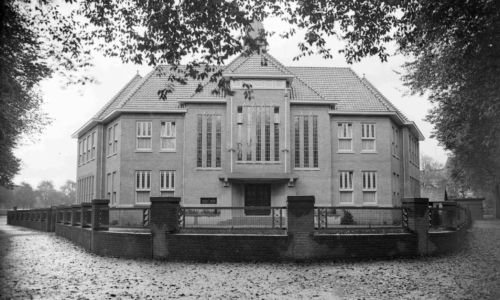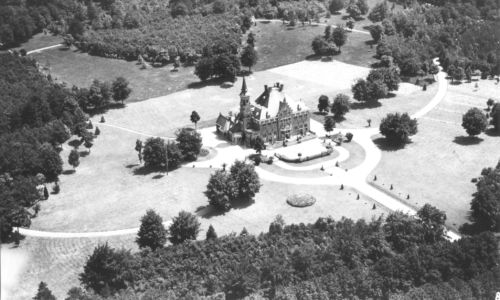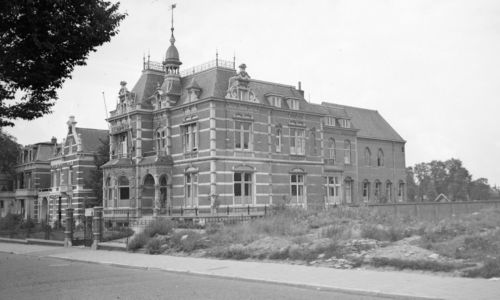Then & Now (7): The A building of the medical faculty in 1956
-
 Foto: Regionaal Archief Nijmegen
Foto: Regionaal Archief Nijmegen
In the past, the university did not have a campus; instead, its education buildings were spread out across the city. In the context of the 95th anniversary of Radboud University, Vox is exploring the image archives to learn more about its history. What has changed? Today: the medical faculty.
Already during the founding meeting of the Sint Radboudstichting (St. Radboud foundation) in 1905, there was mention of the importance of a medical faculty for the future catholic university. However, when that university became a reality in Nijmegen in 1923, no medical academic education was provided and this wouldn’t be the case for quite some time. This was not due to unwillingness on the part of the St. Radboud foundation. In fact, it was very keen on having a medical degree programme with catholic morality. A lack of funds was the main cause.
Government funding
In 1948, when it became clear that special universities would receive government funding, the Nijmegen university could finally put its money where its mouth was. It quickly started buying land as well as designing and planning the construction. The leading architect Jan van der Laan took was the designer. Location: Heyendael estate, with Huize Heyendael (Heyendael residence) as the epicentre of the construction activities.
The construction of an academic medical centre was a difficult job. It had to simultaneously serve several different purposes: research, education, and patient care. Van der Laan was not fully convinced of the designs of existing academic clinics. Therefore, he combined the different building systems and placed a long, five-metre-wide central corridor that connected the different medical specialties. In 1950, the construction principles were established. The plan was to complete the academic medical centre within ten years. Due to unforeseen circumstances, that deadline was eventually exceeded by fifteen years. In addition, the hospital turned out to be a lot bigger than planned.
The pre-clinical institute
The building with the highest priority was the pre-clinical institute, where first- and second-year students could attend laboratory courses. In 1950/51, the first building of the medical faculty was completed in less than a year, in which the first pre-clinical lectures at the Catholic University were held. There were not enough chairs yet, which is why teachers and students often had to stand and hang around in the lecture hall. The pre-clinical institute had practical rooms, a glass-blowing factory, an instrument factory, and work rooms. In 1966, the entire pre-clinical complex was ready.
Nursing Building A
In the picture, the oldest hospital building of the Radboud university medical center can be seen. The building that is nowadays referred to as Nursing Building A (M 608 for insiders), was constructed in the mid-fifties and accommodated the entire hospital. While the initial plan was to have three hundred beds, there eventually was only enough space for 175. This was because a large part of the building was required for a monastery, the hospital administration, and research labs.
Another setback: the new hospital needed to have its own kitchen. In the original plans, Radboud would get its warm meals from the St. Canisius hospital during the first couple of years. In fact, the St. Canisius hospital temporarily housed some of the departments. However, the distance turned out to be too large to keep the food at a warm temperature, which is why an emergency kitchen building was needed.
In the end, the hospital officially opened on 29 September 1956. Of course, it was outgrown in no time. In the years that followed, the university grew considerably. The medical faculty, too, received the addition of more and more buildings. The A building still remains standing, but has been thoroughly renovated a number of times.
Many thanks to Jan Brabers, university historian. The photo of the present-day main building was provided courtesy of Marjolein van Diejen. Historical photo: The Nijmegen Regional Archives
Sources: Rob Wolf, De trek naar het zuiden: gebouwen van de Katholieke Universiteit Nijmegen 1923-1998 (The migration to the south: buildings of the Catholic University Nijmegen 1923-1998) (Nijmegen 1998) and Radboud university medical center.



